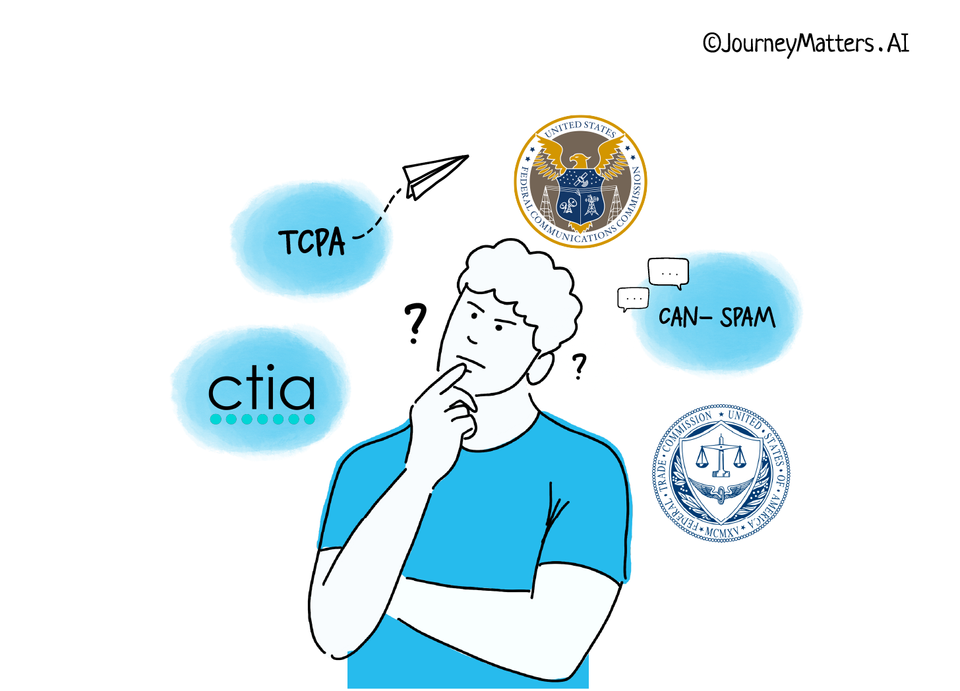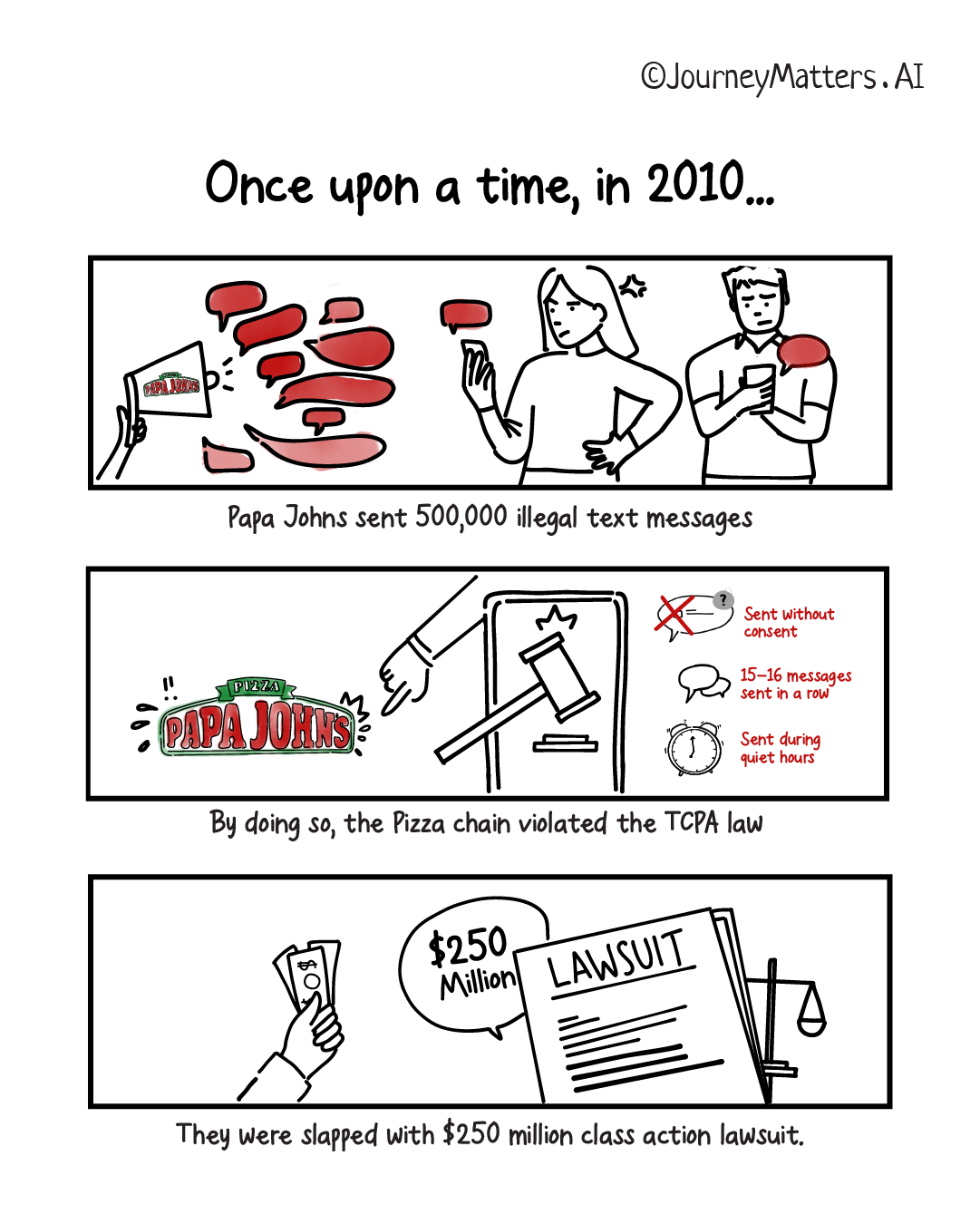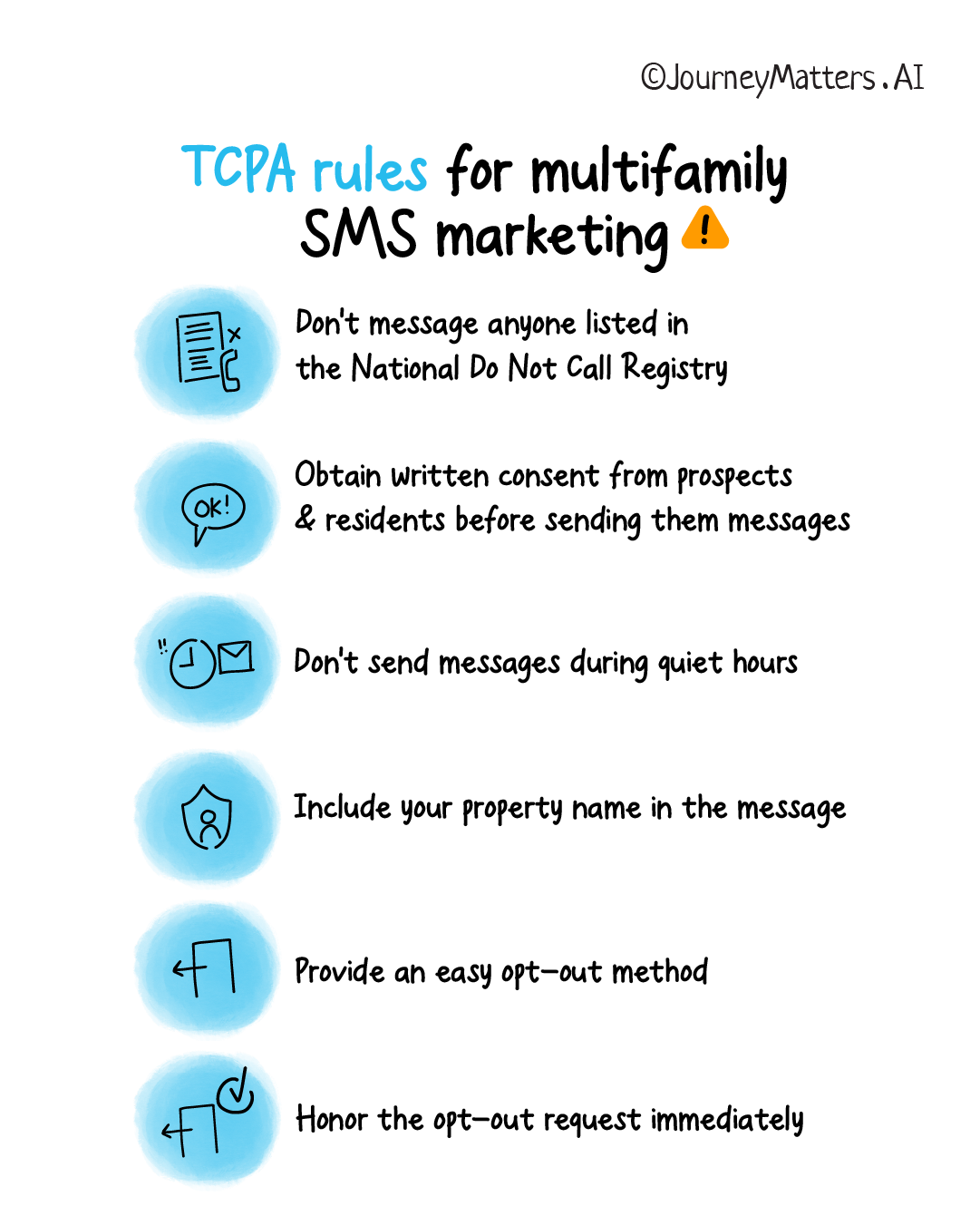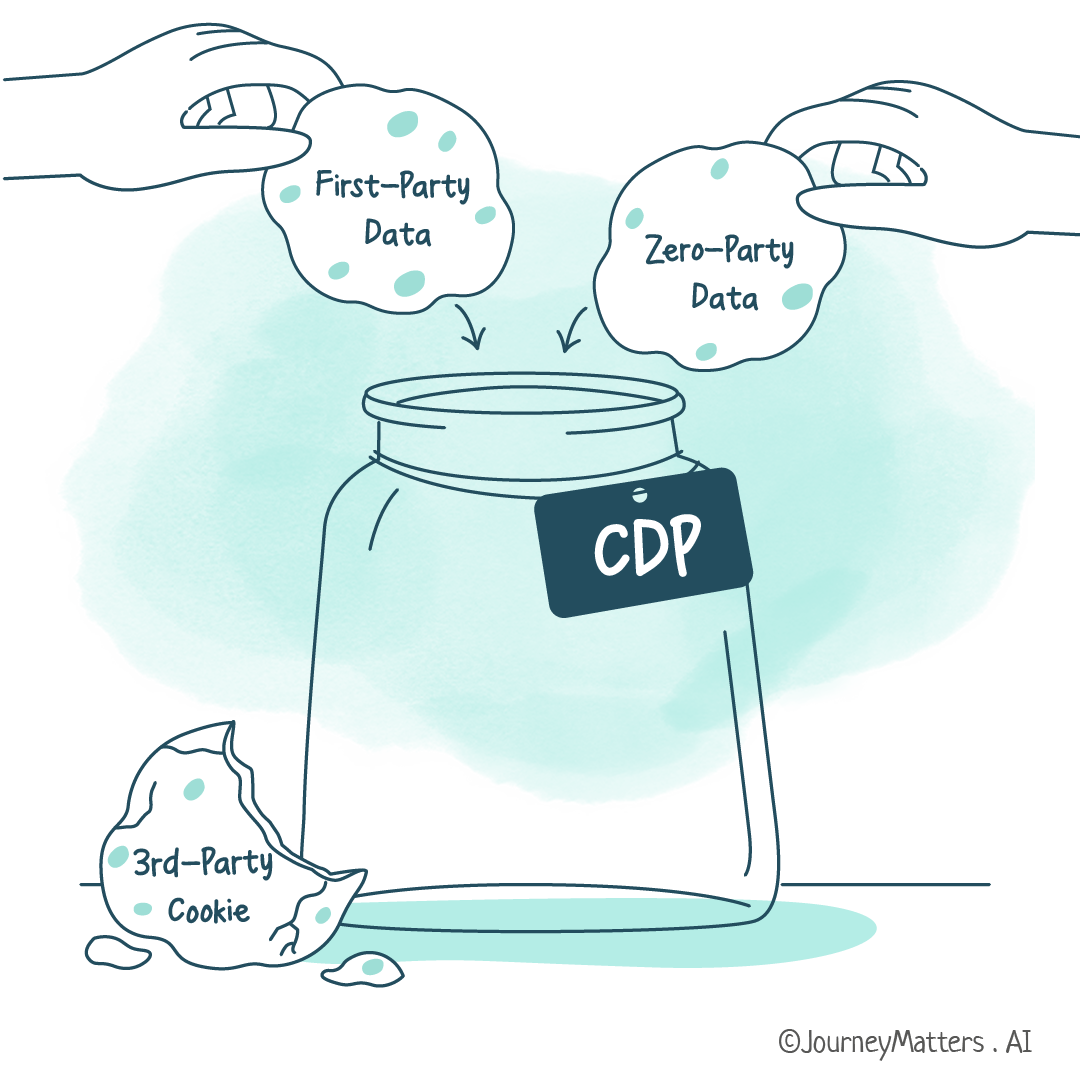Everything Multifamily Needs to Know About SMS Compliance

Summary
According to Hyly.AI Data Science Team, 69% of multifamily prospects opt for marketing SMSs, making it one of the most preferred communication channels. Though powerful, SMS is a compliance-heavy marketing strategy.
This guide is for multifamily marketers to help them understand SMS marketing laws in the US.
It answers the following questions:
- Why does SMS compliance matter?
- Who regulates SMS marketing in the US?
- The Federal Agencies
- The Trade Associations
- What are the SMS marketing laws in the US?
- What are the best practices for SMS marketing compliance?
Why does SMS compliance matter?

In Nov 2012, your favorite pizza chain, Papa John's was slapped with a $250 million class-action lawsuit[1]. Why? Because they were accused of blasting customers with 500,000 illegal text messages!
These messages violated the Telephone Consumer Protection Act for three reasons:
- The marketing SMSs were sent through an autodialer without the customer’s consent [2].
- Few customers received 15 to 16 messages in a row.
- Some SMS were sent during the quiet hours, including midnight.
Their argument, that customers gave consent to the messages when they provided mobile numbers to purchase a pizza, was denied by the court.
Finally, in 2013, Papa Johns settled the lawsuit for $16.5 million [3].
Who regulates SMS marketing in the US?

Any breach of SMS laws can impact your brand value. So, to make the most of text marketing, let's learn about SMS compliance in the US.
Before we begin, it will be good to know about the entities responsible for SMS marketing laws and guides.
The Federal Agencies
The below two federal agencies enforce and regulate SMS marketing laws:
- Federal Communication Commission (FCC)
FCC is a federal agency that regulates interstate and international media and phone communications. Its goal is to promote connectivity and ensure a robust and competitive market.
- The Federal Trade Commission (FTC)
FTC enforces antitrust and consumer protection laws to prevent fraud, deception, and unfair business practices. It has two primary goals: to protect the consumers and maintain a competitive market.
Trade Associations
Next, let's see the trade associations that develop SMS marketing guidelines.
- Mobile Marketing Association (MMA)
MMA is an industry association responsible for Consumer Best Practices Guidelines (CBP) [4] for SMS marketing. It provides a playbook of accepted practices, standards, and frameworks for U.S. wireless carriers.
- Cellular Telecommunication Industry Association (CTIA)
CTIA is a trade association that represents the US wireless communication industry.
The CTIA developed the Shortcode Monitoring Handbook[5] that promotes voluntary best practices to protect consumers from SMS spam. This handbook outlines what can and cannot be included in SMS campaigns.
It is important to understand and follow MMA and CTA guidelines, though it isn't federal law.
What are the SMS marketing laws in the US?
Time to look at the laws that determine text message compliance in the US:
Telephone Consumer Protection Act (TCPA)

The Telephone Consumer Protection Act [6] or TCPA was originally designed to protect American consumers from the number of nuisance calls received on their landline phones.
Enacted on 20th December 1991, TCPA has been modified since to include SMS or text marketing. In 2015, FCC confirmed that under the TCPA, all rules related to calls apply to text messages [7].
Below are the main TCPA rules for multifamily SMS marketing:

- Do not call/ message anyone listed in the National Do Not Call Registry[8].
- Obtain written consent from prospects & residents before sending them messages.
- Don't use an Automated Telephone Dialing System(ATDS) to send messages to prospects and residents without the receiver’s prior written consent.
- Disclose your identity in the message, like the property name, or address.
- Don’t send any messages to prospects before 8 a.m. or after 9 p.m., or during their state-specific quiet hours.
- Provide an opt-out to all prospects and residents receiving the marketing messages.
Any violation of the law could cost your property $500 to $1,500 for each SMS.
CAN-SPAM Act

CAN-SPAM Act[9] was enacted in 2003 to develop rules around unwanted electronic commercial emails and messages.
The primary goal of the CAN-SPAM Act is to curb email spam sent to computers. According to FTC attorney Christopher Brown, in certain cases, it applies to spam transmitted to wireless devices like mobiles[10].
In 2005, the FCC adopted rules prohibiting sending an unwanted commercial text message to a cell phone using Internet-to-phone short message service (SMS) technology.
Since most multifamily marketers use automation to send these SMS, they need to pay careful attention not to violate CAN-SPAM or TCPA rules.
What are the best practices for SMS marketing compliance?
SMS marketing is a powerful tool to engage with your prospects and residents. But it's important to ensure that your text messages are compliant with laws and regulations. Here are some best practices to follow:
Provide an opt-in option
SMS opt-in provides a clear description of the type of messages that the prospect is consenting (or not) to receive. Since the TCPA mandates it to take the recipient’s consent, you should only send text messages after the prospect explicitly selects the SMS opt-in.
You could include opt-in in your email footer, contact card form, tour scheduler, etc.
Generally, there are two types of opt-ins:

Single opt-in
In a single opt-in, a prospect provides their phone number via the tour scheduler form, contact form, or email footer and ticks the SMS opt-in. They are now a subscriber to your nurture SMS list.
Pros:
- Keeps things simple and increases the chances of prospects opting for messages.
Cons:
- Prospects who do not wish to receive messages can accidentally subscribe.
- With a single opt-in, there is no way to confirm if the number entered belongs to the prospect.
Double opt-in
Double opt-in consists of the following steps:
- The prospect enters their phone number into the tour schedule form.
- They receive an SMS message from the property which asks them to confirm the subscription by replying to the text.
- When prospect replies with a Yes, OK (or other valid options mentioned in the confirmation SMS), they are considered subscribed for the SMS nurturing.
- If the prospect does not reply to the confirmation SMS, the property does not send them further messages.
Pros
- Only seriously interested prospects will opt-in.
Cons
- A complicated process that involves several steps and hence most of the prospects will not complete the opt-in.
We recommend a third option that brings out the best of both:
The balanced opt-in

It uses separate opt-ins for promotional and transactional messages. A prospect can opt for any one or both.
The Send text message updates about my tour option refers to transactional messages. These SMS would include reminders, SMS from agents, e.g. answer to a question that a prospect asked, etc.
Send text messages about offers and promotions refers to promotional messages. They would include nurturing and other promotional SMS.
Send Confirmation messages
The MMA guidelines instruct the telemarketers to send a confirmation message after the prospects opt-in for SMS.
Confirmation text messages need to contain:
- Your brand name (the property name)
- Service description
- The frequency of messaging
- HELP instructions
- Opt-out (STOP) instructions
- A disclosure that says "Message and Data Rates May Apply."
Provide an opt-out option

Prospects should have the option to opt-out of receiving the nurturing SMS at any given point in time. The property can provide an opt-out in the email footer or during the SMS journey.
Prospects may receive an SMS that tells them to type the OPTIONS.
A balanced opt-out will have two options
- STOP: To stop the promotional messages, but continue receiving the transactional SMS
- LEAVE: To completely stop receiving SMS.
Once a prospect chooses to opt out of the SMS, you should immediately stop sending any further messages.
Conclusion
Educating yourself on the rules of compliance is the first step to SMS marketing. By knowing the SMS laws and best practices, you can create text messages that are compliant and effective in engaging with prospects and residents.
Resources
- Papa Johns slapped with $250 million class-action lawsuit (money.cnn.com)
- FCC prohibits text messages sent to a mobile phone through an autodialer (Federal Communications Commission, Consumer Guide)
- Papa Johns settled the lawsuit for $16.5 million (topclassactions.com)
- CBP Consumer Best Practices Guidelines (Mobile Marketing Association)
- Shortcode Monitoring Handbook (Cellular Telecommunications Industry Association)
- The Telephone Consumer Protection Act (Federal Communications Commission)
- Under the TCPA, all rules related to calls apply to text messages. (FCC update release, 2015)
- National Do Not Call Registry (Federal Trade Commission)
- CAN-SPAM Act (Federal Trade Commission)
- CAN-SPAM applies to spam transmitted to wireless devices like mobiles. (FTC attorney Christopher Brown)





Member discussion